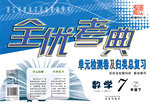题目内容
10. I heard the news the first prize in the contest (win)
我听到了我们班代表赢得了竞赛第一的消息。
10. that our class representative had won

练习册系列答案
 全优考典单元检测卷及归类总复习系列答案
全优考典单元检测卷及归类总复习系列答案
相关题目
题目内容
10. I heard the news the first prize in the contest (win)
我听到了我们班代表赢得了竞赛第一的消息。
10. that our class representative had won

 全优考典单元检测卷及归类总复习系列答案
全优考典单元检测卷及归类总复习系列答案